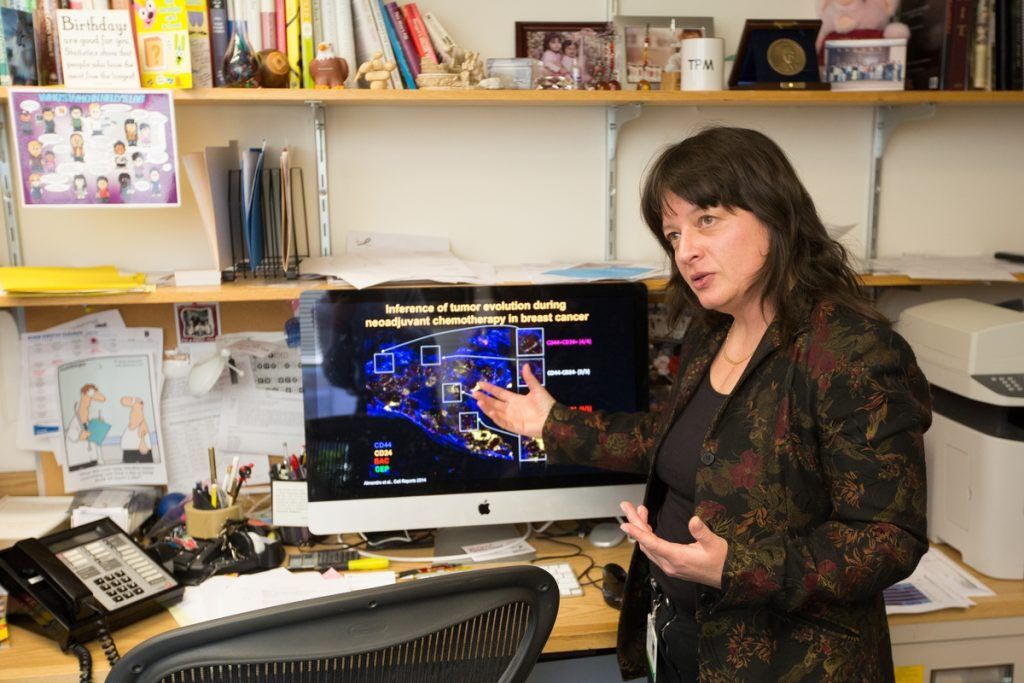Dr. Kornelia Polyak and her team identified covert activity in two cancer cell populations that drive breast cancer metastasis.
Tumors are not made up of a homogenous group of cancer cells. In fact, they are made up of a variety of cancer cells. Researchers are determined to understand these cell types and how they contribute to breast cancer growth.
In a study reported in the journal, Nature Cell Biology, BCRF investigator Kornelia Polyak identified two unsuspecting tumor cell types that cooperate to enable breast cancer metastasis. Dr. Polyak and her team showed that two rare subpopulations of tumor cells, known as subclones, were key determinants in whether a tumor was able to metastasize. While the findings are preliminary, they may offer key insights for patients with triple negative breast cancer (TNBC) – an aggressive form of the disease. TNBC tumors tend to be very heterogeneous and prone to metastasis.
Ultimately, Dr. Polyak predicts that this information can be used to identify patients at diagnosis with a high risk of metastasis.
“What we have shown is that small subpopulations of cells exist at the start of tumor formation and that these cells are the driving force behind metastasis,” Dr. Polyak said.
Dr. Kornelia Polyak is a pioneer in the field of tumor heterogeneity and her BCRF work has led the way in advancing our understanding of how this heterogeneity affects tumor cell survival, tumor growth and response to anti-cancer drugs, and tumor metastasis – the spreading other tissues.
In the current study, she and her team focused on two subclones found in tumors that were highly metastatic. They wanted to understand how a group of cells that made up less than 5 percent of cells in the tumor were able to drive such aggressive behavior.
The two cell types expressed high levels of IL11 (interleukin 11) and FIGF (Fos-induced growth factor), respectively. After a complex series of experiments, the team determined that IL11 and FIGF expressing cells promoted metastasis by co-opting cells in the microenvironment – the tissue around the tumor as well as inducing changes the blood and in the lungs – where metastases developed. The IL11 cells recruited a type of white blood cells – neutrophils, which should activate an anti-tumor immune response. Instead, they assisted the tumor cells during metastasis. The FIGF cells helped to make blood vessels leaky that allowed an escape route of the tumor cells.
“Neither of these processes alone will result in metastasis,” explained Dr. Polyak. “The FIGF created the escape route and the IL11-induced neutrophils created the right environment at the site of metastasis so that the tumor cells could survive.”
What’s next?
In the next phase of the research, Dr. Polyak will examine human tumor samples to see if the subclones are present and explore ways to interfere with this cooperation between the subclones to prevent metastasis.
Understanding tumor biology is at the heart of every advancement in breast cancer care and why deaths due to breast cancer are at their lowest level in 30 years. Tumor biology research makes up the more than half of BCRF’s $66 million investment this year. Of that, about two-thirds goes into studying the underlying processes and events that lead to metastasis and identifying new treatment and prevention strategies.







